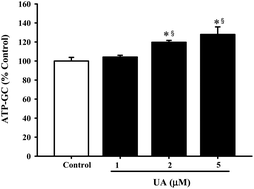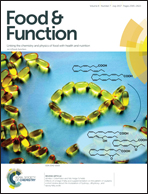Ursolic acid induces mitochondrial biogenesis through the activation of AMPK and PGC-1 in C2C12 myotubes: a possible mechanism underlying its beneficial effect on exercise endurance
Abstract
Mitochondrial biogenesis, which involves an increase in mitochondrial number and the overall capacity of oxidative phosphorylation, is a critical determinant of skeletal muscle function. Recent findings have shown that some natural products can enhance mitochondrial adaptation to aerobic exercise, which in turn improves exercise performance, presumably by delaying muscle fatigue. Ursolic acid (UA), a natural triterpene, is commonly found in various vegetables and fruits. In the current study, UA was shown to increase mitochondrial mass and ATP generation capacity, with a concomitant production of a low level of mitochondrial reactive oxygen species (ROS) in C2C12 myotubes. Mitochondrial ROS, in turn, activated the redox sensitive adenosine monophosphate-dependent protein kinase (AMPK)/peroxisome proliferator-activated receptor γ coactivator-1(PGC-1) pathway. The activation of AMPK/PGC-1 further increased the expression of cytochrome c oxidase (COX) and uncoupling protein 3. Animal studies showed that UA can also dose-dependently increase the endurance exercise capacity in mice, as assessed by a weight-loaded swimming test and a hanging wire test. Our findings suggest that UA may induce mitochondrial biogenesis through the activation of AMPK and PGC-1 pathways in skeletal muscle, thereby offering a promising prospect for its use to enhance exercise endurance and alleviating fatigue in humans.



 Please wait while we load your content...
Please wait while we load your content...